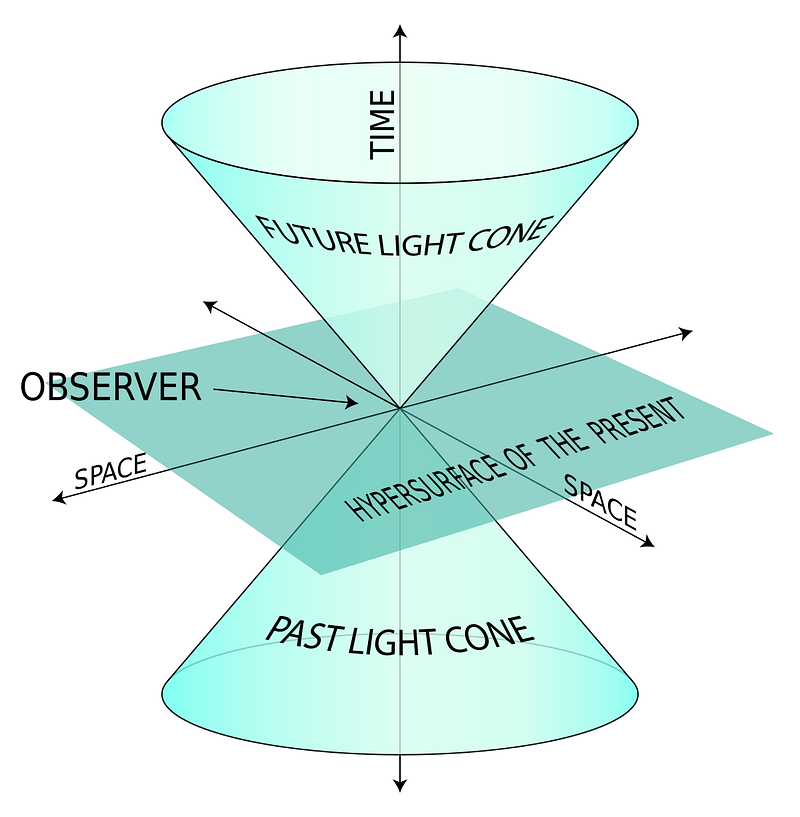Exploring Dimensions: The Interplay of Time and Space
Written on
Chapter 1: Understanding Dimensions
Consider the following: jump into the air, take three steps forward, turn around, and then move two steps to the right. You’ve just navigated the three dimensions we are familiar with. While you might not have manipulated the fourth dimension—time—in the same manner, it still plays a crucial role in our understanding of the universe. There are dimensions beyond what we typically perceive:

The First Dimension: This dimension consists solely of height; it’s akin to a line where movement can only occur vertically—up or down.
The Second Dimension: Here, we introduce width, akin to a classic Nintendo Mario game where movement is restricted to up, down, left, and right—yet still lacks depth.
The Third Dimension: This is where humanity exists, adding depth to the previous dimensions. Picture a carton of milk; it encompasses all previous dimensions with the addition of volume.
The Fourth Dimension—Time: This dimension is often seen as the fabric of spacetime, influencing our universe significantly. Our perception of time is linear, making it challenging to manipulate or warp.
The Importance of Time in Understanding Dimensions
Now, let's return to the significance of time. In our universe, time serves as the primary temporal dimension amidst three spatial dimensions. To fully grasp the location of an object, all dimensions must be considered.
For instance, if you want to describe the position of your water bottle, you would provide its geographical coordinates—longitude and latitude—along with its elevation on Earth. If yesterday you left it at the office but find it on your bedside table tonight, providing only its coordinates without referencing time will lead to confusion.

If someone were to seek the water bottle based on yesterday's coordinates, they would instead discover whatever object is currently occupying that space, as the specific moment in time was not clarified. This emphasizes that understanding an object's location in time is as crucial as knowing its physical position.
To illustrate further, imagine a being in the second dimension moving along a line. If another object is situated at a different point on that line, they may overlap in space. This is known as a simultaneous event, highlighting the necessity of time in spatial considerations.

The movement of an object through spacetime can distort its path, as depicted above. This illustrates why time must be factored into our understanding of dimensions, and why a dimension cannot exist without time. Despite our awareness of the fourth dimension, we cannot intentionally navigate through it, much like a two-dimensional being cannot alter the third dimension.

Considering Multiple Time Dimensions
Let's delve into string theory, which speculates about "extra dimensions" that could unify the universe. This raises the intriguing possibility of more than one time-related dimension.
As we already have multiple spatial dimensions, why not consider additional time dimensions? Two prominent theories suggest this concept:
- Real and Imaginary Time Dimensions: This speculative theory proposes two "complex" time dimensions, transitioning time from a simple number line to a more intricate complex plane.

- 5D Spacetime: This theory extends the Kaluza-Klein framework, which seeks to connect gravity with electromagnetic forces within a fifth dimension, while also accounting for matter interactions. Integrating these theories could provide solutions to existing dilemmas regarding time.
In conclusion, time is essential for defining any dimension. While we have much to learn about the potential complexities of spacetime, our understanding continues to evolve.
Thank you for engaging with this article! I hope it sparked your curiosity and encouraged further thought on the subject. Feel free to reach out via email at [email protected] or connect with me on LinkedIn under Amelia Settembre.
This video, titled "No, Time Is Not The 4th Dimension," provides insights into the relationship between time and dimensions, challenging common misconceptions.
In this video titled "Time is Not a Spatial Dimension There Are Only 3 Dimensions," the speaker explores the fundamental nature of time in contrast to spatial dimensions.